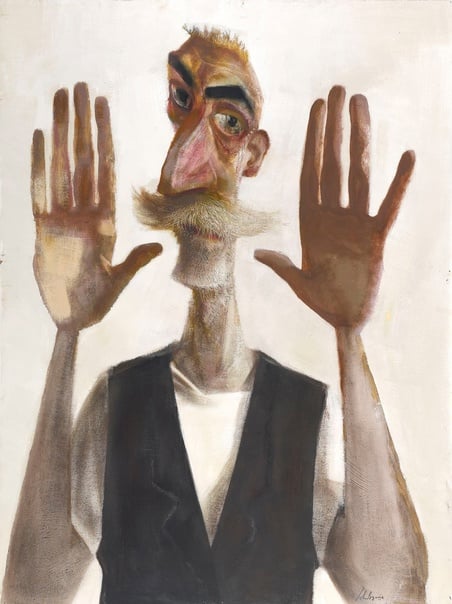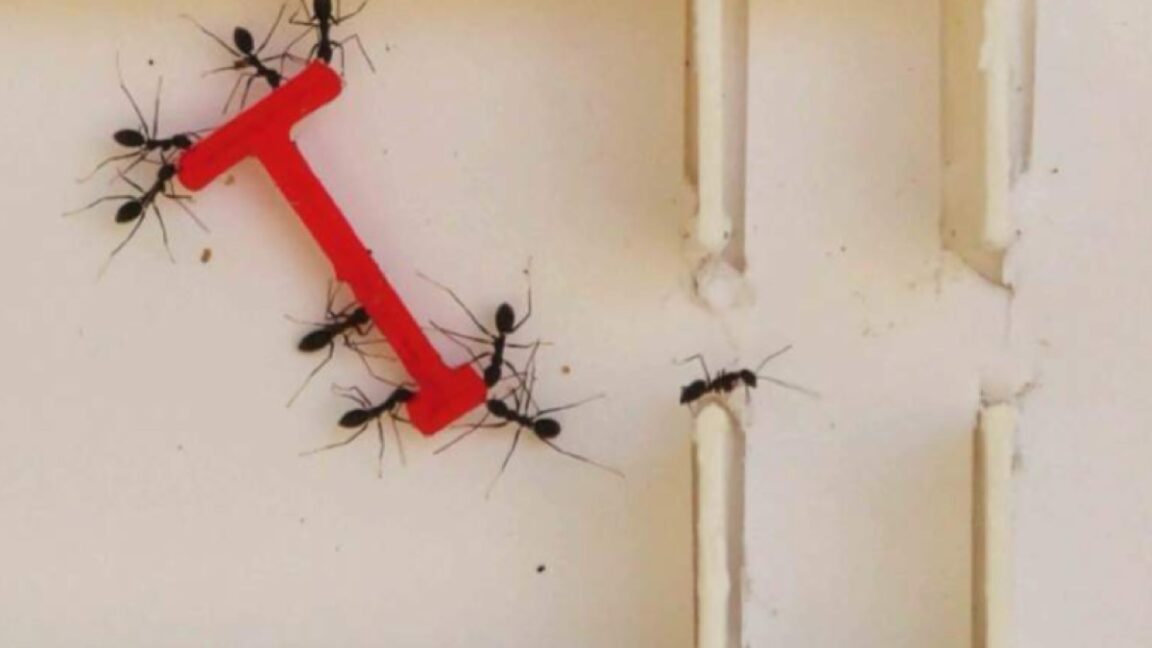The experiment was run multiple times with different variations: a single ant, a group of about seven ants, and a larger group of around 80 ants; and a single person, a group of six to nine people, and a larger group of 26 people. Humans were instructed to hold the load only by handles that were carefully placed to mimic how the object would be held by ants, and the handles had sensors for measuring the pulling force applied by each person. In some of the runs, humans were not allowed to communicate verbally or with gestures, and in some trials, they even wore masks and sunglasses to avoid nonverbal communication. Each trial run was videotaped for analysis.
It should come as no surprise that humans had the edge as individuals, given their superior cognitive abilities; as communicating groups, they also easily beat the ants at finding the optimal solution. And large groups of ants performed much better than individual ants. However, the picture changed when humans were limited in their ability to communicate; large groups of ants often actually performed better than humans in several runs, thanks to their emergent collective memory that helped them avoid repeated mistakes and maintain a particular direction of motion.



Lmao, I kinda figured. Appreciate the follow-up.
That said, there are apparently efforts to see if we can get ants and other insecta addicted to coke.
cartels are looking for bigger #s